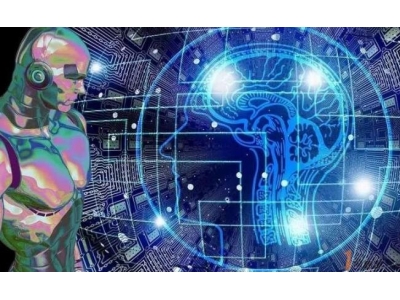一、How Affordance Theory Revolutionizes Education
Introduction
Education plays a pivotal role in shaping individuals' intellectual, social, and emotional development. Over the years, educators have continuously sought innovative approaches to enhance the learning experience. One such approach that has gained traction is the implementation of affordance theory in education. Affordance theory, originally introduced in the field of psychology, provides a unique perspective on how individuals perceive and interact with their environment. In the context of education, this theory offers valuable insights into designing effective learning environments and maximizing students' learning potential.
Understanding Affordance Theory
Affordance theory, developed by psychologist James J. Gibson, posits that human perception is based on the opportunities and actions that the environment offers, rather than solely relying on sensory inputs. It emphasizes the interplay between an individual's perception, action, and the characteristics of the environment. In other words, individuals perceive and understand objects or situations based on their potential for action.
In the context of education, affordance theory suggests that students' learning experiences are shaped by the affordances present in their learning environment. These affordances can range from physical elements like classroom layout and instructional materials to social elements like collaborative activities and teacher-student interactions. By optimizing the affordances in the learning environment, educators can create engaging and effective learning experiences.
Optimizing Learning Environments
Applying affordance theory to education involves creating learning environments that enhance students' learning experiences and facilitate their interactions with the subject matter. Here are some key strategies to optimize learning environments:
- Designing Interactive Spaces: Classrooms should be designed to promote active engagement and exploration. Flexible seating arrangements, interactive displays, and hands-on activities provide students with opportunities to interact with the subject matter and their peers.
- Providing Clear Instructions: Clear and concise instructions enable students to understand the specific actions required for successful completion of learning tasks. This clarity helps students perceive the affordances of the learning materials and prompts appropriate actions.
- Fostering Collaboration: Encouraging collaborative activities allows students to benefit from the affordances of social interaction. Group projects, discussions, and peer feedback provide opportunities for students to share knowledge, solve problems, and learn from each other.
- Utilizing Technology: Integrating technology into the learning environment enhances the affordances available to students. Interactive simulations, virtual reality, and online resources provide immersive and dynamic learning experiences that traditional methods cannot replicate.
Benefits of Affordance Theory in Education
The application of affordance theory in education offers several benefits:
- Enhanced Student Engagement: Optimizing the affordances in the learning environment helps create engaging and interactive learning experiences, capturing students' attention and motivating them to actively participate in the learning process.
- Improved Learning Outcomes: When students are provided with a learning environment that aligns with the affordances of the subject matter, they are more likely to understand and retain the information, leading to improved learning outcomes.
- Promotion of Critical Thinking: Affordance theory encourages students to explore and analyze the available affordances in their learning environment, fostering critical thinking skills and facilitating a deeper understanding of the subject matter.
- Personalized Learning Experiences: By considering the individual needs and preferences of students, educators can tailor the affordances of the learning environment, allowing for personalized and differentiated learning experiences.
Conclusion
Affordance theory presents a valuable framework for designing effective learning environments and revolutionizing education. By optimizing the affordances available to students, educators can create engaging, interactive, and personalized learning experiences that enhance student engagement, improve learning outcomes, and foster critical thinking skills. Incorporating affordance theory in education not only benefits students in their academic journey but also equips them with the necessary skills to thrive in an ever-evolving world.
Thank you for taking the time to read this article. We hope it provided you with valuable insights into the application of affordance theory in education and its potential impact on students' learning experiences.
二、人工智能是人工智能机么?
人工智能不是人工智能机。首先要了解什么是人工智能,人工智能(Artificial Intelligence),英文缩写为AI。它是研究、开发用于模拟、延伸和扩展人的智能的理论、方法、技术及应用系统的一门新的技术科学。
人工智能是计算机科学的一个分支,它企图了解智能的实质,并生产出一种新的能以人类智能相似的方式做出反应的智能机器,该领域的研究包括机器人、语言识别、图像识别、自然语言处理和专家系统等。人工智能从诞生以来,理论和技术日益成熟,应用领域也不断扩大,可以设想,未来人工智能带来的科技产品,将会是人类智慧的“容器”。人工智能可以对人的意识、思维的信息过程的模拟。人工智能不是人的智能,但能像人那样思考、也可能超过人的智能。
人工智能是一门极富挑战性的科学,从事这项工作的人必须懂得计算机知识,心理学和哲学。人工智能是包括十分广泛的科学,它由不同的领域组成,如机器学习,计算机视觉等等,总的说来,人工智能研究的一个主要目标是使机器能够胜任一些通常需要人类智能才能完成的复杂工作。但不同的时代、不同的人对这种“复杂工作”的理解是不同的。
三、人工智能安全与人工智能区别?
人工智能安全和人工智能是两个不同的概念,它们有一些相似之处,但也有明显的区别。
人工智能(Artificial Intelligence,简称 AI)是指能够执行人类智能任务的计算机程序,例如推理、学习、感知和行动。人工智能系统可以通过处理大量数据来学习和改进自己的能力,并能够在各种应用程序中使用,例如自然语言处理、图像识别、语音识别、智能推荐系统等。
人工智能安全则是指确保人工智能系统的安全性和可靠性。这包括保护人工智能系统免受恶意攻击、确保数据隐私和安全、遵守法律法规等方面。人工智能安全的目标是确保人工智能系统在使用过程中不会造成任何安全问题,并保护用户的隐私和数据安全。
因此,人工智能安全是人工智能的一个重要方面,它旨在确保人工智能系统的安全性和可靠性,并保护用户的隐私和数据安全。而人工智能则是一种广泛的概念,包括各种类型的人工智能系统,包括安全的人工智能系统和不安全的人工智能系统。
四、人工智能和人工智能etf的区别?
1、指数的差异:其中AIETF和人工智能AIETF 跟踪的标的指数相同,都是中证根据产业链编制的人工智能主题指数。
2、科创板打新:从最近两只热门的科创板中芯国际和寒武纪来看,AIETF都中标了,而且打满。而人工智能AIETF都没中。
3、费率:从费率上看AIETF显著低于其他两个,管理费加托管费只有0.2%,而另外两个则要0.6%。费率上省下的也可以为基金业绩提升不少。
五、量子人工智能和超级人工智能区别?
量子人工智能和超级人工智能是两个不同的概念,其区别如下:
技术原理:量子人工智能是将量子计算机和人工智能相结合,利用量子计算机的计算能力来加速人工智能算法的执行和优化;而超级人工智能则是指在现有计算机技术基础上,通过不断深化、扩展和优化算法来提高人工智能的智能水平。
计算能力:量子计算机可以利用量子叠加态和量子纠缠态等特性,同时进行多个计算任务,具有强大的计算能力,能够在处理复杂问题时比传统计算机更快更准确;而超级计算机则是通过并行计算、多核处理和加速器等方式来提高计算能力,但在面对某些特定问题时可能仍然无法胜任。
应用领域:量子人工智能主要应用于计算机科学、化学、生物学、金融等领域,例如加速量子化学计算、解决密码学问题、优化复杂网络等;而超级人工智能则广泛应用于图像识别、自然语言处理、智能机器人、智能交通、医疗保健等领域。
综上所述,量子人工智能和超级人工智能是两个不同的概念,分别侧重于利用不同的技术手段来提高人工智能的计算能力和智能水平,有着各自的应用场景和发展前景。
六、人工智能和人工智能产业班区别?
1、人工智能的本质
人工智能是相对于人的智能而言的。正是由于意识是一种特殊的物质运动形式,所以根据控制论理论,运用功能模拟的方法,制造电脑模拟人脑的部分功能,把人的部分智能活动机械化,叫人工智能。人工智能的本质是对人思维的信息过程的模拟,是人的智能的物化。尽管人工智能可以模拟人脑的某些活动,甚至在某些方面超过人脑的功能,但人工智能不会成为人类智能而取代人的意识。
2、人工智能与人类思维的本质区别
人工智能是思维模拟,并非人的思维本身,决不能把“机器思维”和人脑思维等同起来,认为它可以超过人脑思维是没有根据的。
(1)人工智能是无意识的机械的、物理的过程。人的智能主要是生理的和心理的过程。
(2)人工智能没有社会性。人类智慧具有社会性。
(3)人工智能没有人类意识特有的能动性和创造能力。人类思维则主动提出新的问题,进行发明创造。
(4)电脑可以代替甚至超过人类的部分思维能力,但它同人脑相比,局部超出,整体不及。智能机器是人类意识的物化,它的产生和发展,既依赖于人类科学技术的发展水平,又必须以人类意识对于自身的认识为前提。因此,从总体上说;人工智能不能超过人类智慧的...意识和人工智能的关系
1、人工智能的本质
人工智能是相对于人的智能而言的。正是由于意识是一种特殊的物质运动形式,所以根据控制论理论,运用功能模拟的方法,制造电脑模拟人脑的部分功能,把人的部分智能活动机械化,叫人工智能。人工智能的本质是对人思维的信息过程的模拟,是人的智能的物化。尽管人工智能可以模拟人脑的某些活动,甚至在某些方面超过人脑的功能,但人工智能不会成为人类智能而取代人的意识。
2、人工智能与人类思维的本质区别
人工智能是思维模拟,并非人的思维本身,决不能把“机器思维”和人脑思维等同起来,认为它可以超过人脑思维是没有根据的。
(1)人工智能是无意识的机械的、物理的过程。人的智能主要是生理的和心理的过程。
(2)人工智能没有社会性。人类智慧具有社会性。
(3)人工智能没有人类意识特有的能动性和创造能力。人类思维则主动提出新的问题,进行发明创造。
(4)电脑可以代替甚至超过人类的部分思维能力,但它同人脑相比,局部超出,整体不及。智能机器是人类意识的物化,它的产生和发展,既依赖于人类科学技术的发展水平,又必须以人类意识对于自身的认识为前提。因此,从总体上说;人工智能不能超过人类智慧的界限。关于电脑能够思维,甚至会超过人的思维,电脑、机器人将来统治人类的观点是完全没有根据的。
3、人工智能产生和发展的哲学意义
(1)人工智能的产生和发展,有力地证明了意识是人脑的机能、物质的属性,证明马克思主义关于意识本质的观点的正确性。
(2)人工智能的产生和发展深化了我们对意识相对独立性和能动性的认识。机器思维即人工智能表明,思维形式在思维活动中对于思维内容具有相对独立性,它可从人脑中分化出来,物化为机械的、物理的运动形式,部分地代替人的思维活动。
(3)随着科学技术的发展,人工智能将向更高水平发展,反过来推动科学技术、生产力和人类智慧向更高水平发展,对人类社会进步将起着巨大的推动作用。
以上是我摘的,我本人不同意以上观点,我认为人工智能它是可以超过人的智能,是由他的物理属性决定的。他的发展不可估量。殊不知人工智能,可以
自我学习, 也可以自我进化,也可以有社会属性。政治上这样说,只不过是
愚弄一些无知的人民。
七、人工智能会超过人工智能吗?
人工智能现在科技飞速发展,人工智能虽然发迅速,但目前仅仅单某一项运算超过人工,程序也是人工提前输入而已,目前人工智能科技不能超人,但随现代科学的多元发展,科技对人类大脑研究进一步深入,人工智能超越人类智慧将成为不远的现实,这也将成为人类最大挑战,可能是人类的敌人,替换人类的新生事物,但也是科学发展的必然结果。
八、人工智能与cs人工智能的区别?
人工智能和CS人工智能的区别在于应用方面和研究重点的不同。人工智能是一种涉及多个领域的计算机技术,涉及信息技术、控制科学、数学等学科,旨在开发出能够模仿人类智能思维和行为的程序和系统。人工智能的应用非常广泛,包括自然语言处理、计算机视觉、机器学习等方面。CS人工智能则是计算机科学领域的一部分,重点研究人工智能基础理论、算法及其实现技术等方面,以及在不同领域中的应用。传统的人工智能是基于规则系统和专家系统的,而现代人工智能则更多的是基于数据驱动和机器学习的技术。另外,人工智能的应用场景也在不断拓展,如自动驾驶、智能家居、智能医疗等领域。
九、人工智能和人工智能大战的游戏?
这个游戏很多了,例如星际争霸,王者荣耀,围棋等。
十、人工智能理论?
人工智能的理论包括:
1.计算机视觉:计算机视觉技术运用由图像处理操作及机器学习等技术所组成的序列来将图像分析任务分解为便于管理的小块任务。
2.机器学习:机器学习是从数据中自动发现模式,模式一旦被发现便可以做预测,处理的数据越多,预测也会越准确。
3.自然语言处理:对自然语言文本的处理是指计算机拥有的与人类类似的对文本进行处理的能力。例如自动识别文档中被提及的人物、地点等,或将合同中的条款提取出来制作成表。
4.机器人技术:近年来,随着算法等核心技术提升,机器人取得重要突破。例如无人机、家务机器人、医疗机器人等。
5.生物识别技术:生物识别可融合计算机、光学、声学、生物传感器、生物统计学,利用人体固有的生体特性如指纹、人脸、虹膜、静脉、声音、步态等


 发布于
2024-04-17
发布于
2024-04-17